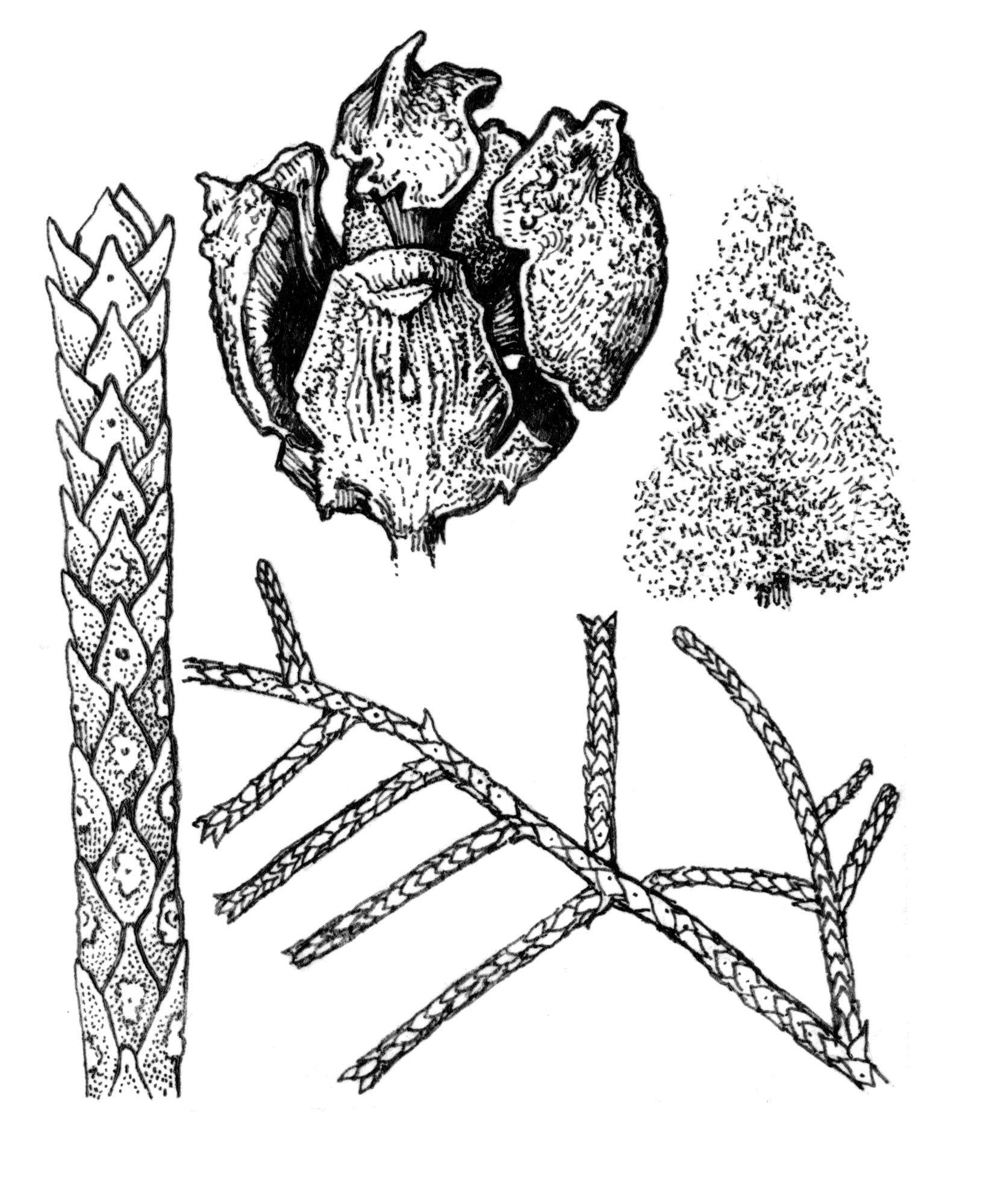
A tree growing to about 15 m tall, mostly conical but habit variable. Bark mostly cherry-red, peeling in thin plates. Branches generally ascending. Branchlets with divisions more or less at right angles to one-another, smelling like grapefruit when crushed. Leaves about 1 mm long, pointed, blue-green to waxy blue with glands exuding conspicuous white resin dots. Male cones about 3 mm long, first appearing in Sept. Female cones 1.5-3 cm wide; scales mostly 8 but varying between 5 and 10, generally warty and remaining closed for several seasons. Seeds smooth or warty, mostly with a waxy bloom.
Bark generally peeling in flat reddish plates; foliage blue-green; individual branchlets set almost at right angles to one-another; leaves with white resin dots and smelling of grapefruit when crushed; cones large and often quite warty. Cupressus forbesii Jeps. (C. guadaloupensis Wats. var. forbesii (Jeps.) Little), Tecate Cypress from S California, also with laminating bark, is known from one site only in Victoria - several trees on the high bank above Lake Colac in Colac Botanical Gardens. The trees are old, open and straggling, with large trunks covered with bark peeling in large, smooth scales to reveal green bark beneath that ages orange-brown.
SA: Dirk Dirk (near Nelson Presbyterian Church). NSW: Bathurst (Sportsground); Bowral (Heritage Park); Uralla (Alma Park). VIC: Buchan (Caves); Castlemaine (Bot. Gds); Geelong (Eastern Park); Teesedale (street planting); Werribee (Werribee Park Estate); Yarraville (Gardens). TAS: Midland, near Oatlands, Hagley; Plenty (Salmon Ponds); Westbury (Common).
Source: (1995). Cupressaceae. In: . Horticultural Flora of South-eastern Australia. Volume 1, Ferns, conifers & their allies. The identification of garden and cultivated plants. University of New South Wales Press. (as Cupressus glabra)
